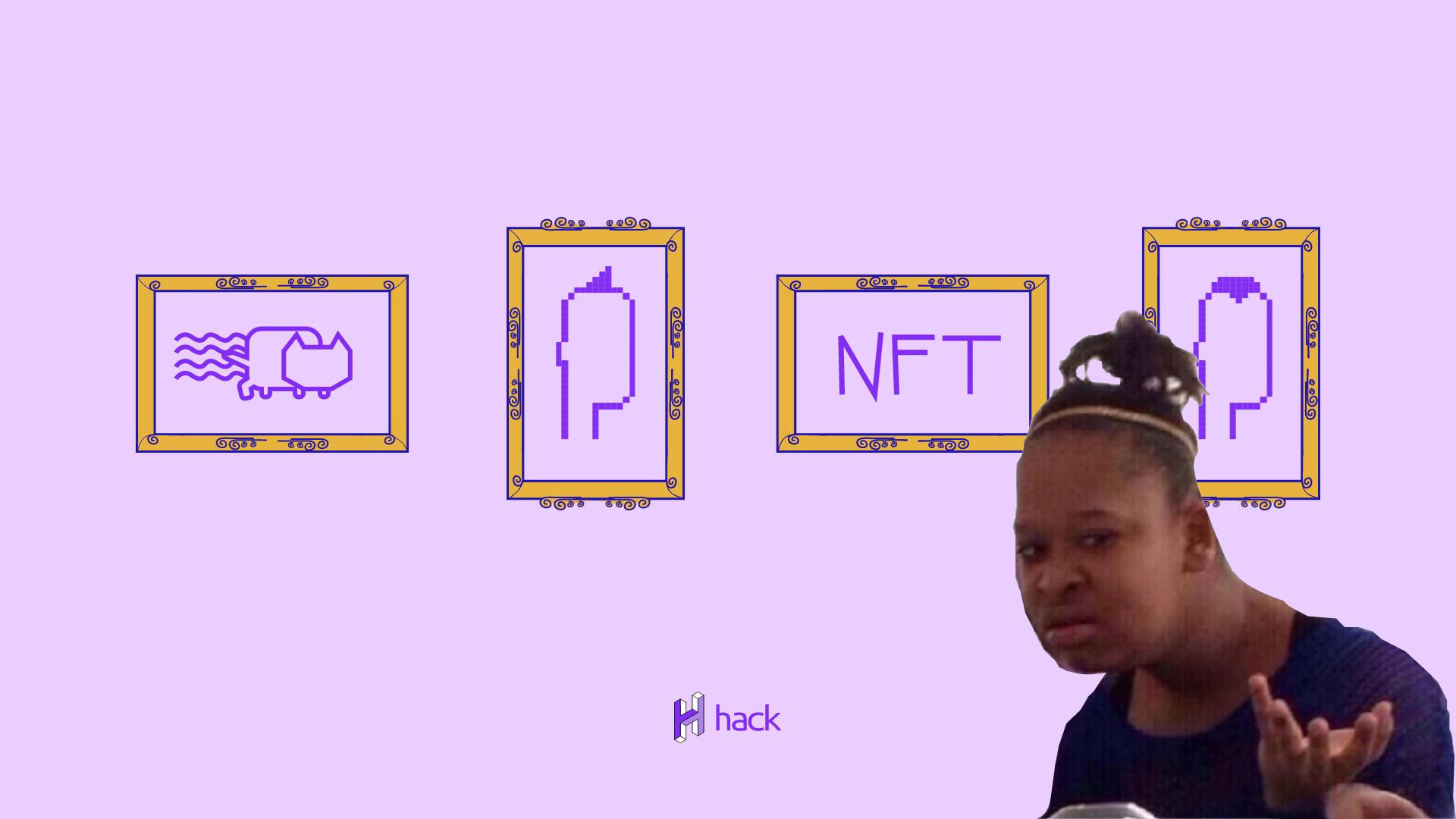Simply put, NFT stands for a non-fungible token which is a digital asset that is distinctive from the others out there. In other words, it is one of its kind and you can not duplicate it.
To read more about what NFTs are read our article: Blockchain NFTs in Art.
With the steady and rapid rise in popularity and purchases of cryptocurrencies for the past year or so, it should come as no surprise that the NFT market is growing rapidly as well since NFTs can be purchased with crypto. Nowadays more and more people are opting to purchase(buy or sell) these one-of-a-kind tokens and this is provable with some…
statistics:
- The market cap for global transactions of NFTs was $40.96 million in 2018, $141.56 million in 2019, and $338.04 million in 2020.;
- In 2021, an NFT called “Everyday’s: The First 5,000 Days” by an artist named Beeple was auctioned off for about $69 million.;
- Big-name brands, such as Taco Bell, have started offering NFTs of their own by creating digital collectables for sale.;
- By March 2021, trading volumes for NFTs on Ethereum totalled more than $400 million.
Although a lot of positive things can be said about NFTs, and many people predict that their value will continue to grow over time, there are also critics who have made it a point to alert people to the potential drawbacks of these digital assets which come with such huge price tags. Some critics argue that NFTs are not going to be able to hold their value for the long run and some even go so far as to say that NFTs aren’t worth anything at all. Many even compare them to the early adoption of the internet and that it is just a fad.
But still, what’s driving people to invest from hundreds of dollars to millions on NFTs?
Well, the impact of the pandemic and distrust in the US dollar created the perfect storm.
Since the start of the pandemic, many people have been saving money and the faith in the US dollar seems to be at an all-time low, which led people to search for new ways of investing. Cryptocurrencies suddenly became something everyone was interested in, automatically turning NFTs from a hobby only for the financial nerds to something fancy and mainstream.
People have long used art to store value and NFTs just happen to be another more modern approach for people to invest and use it like someone would use gold or Bitcoin.
Furthermore, the idea that one can actually own a piece of creation (music, meme, post, digital painting, game assets, etc) is a whole another level of ownership for fans, collectors and enthusiasts which makes NFTs the perfect solution for owning something you really like or you think will be more valuable with time, or as Rodriguez-Fraile once said :
NFTs can represent the future of the art world.
A few years from now this could just be how people own art.
The thing is, NFT’s boom was accelerated by the pandemic, but ultimately it was inevitable as it is a product of the new tech that younger generations would have eventually driven into anyway.
But what about their value?
Some critics believe NFTs are operating under a bubble, even Mike Winkelmann, aka Beeple, once said:
If it’s not a bubble now, I do believe it probably will be a bubble at some point because there are just so many people rushing into this space.
The truth is, there’s always a chance that a tech frenzy is a passing fad or is stoking a speculative bubble. If you spend a pretty penny on an NFT and then enthusiasm and values suddenly plummet, you could be in for a big loss. But NFT backers say the system’s built-in scarcity should keep values up, as long as the surge of interest persists.
So the risks with value are basically the same as in the regular market. If someone is willing to pay thousands of dollars for a banana taped to a wall, then that is modern, interesting and is considered art. The price covering of NFTs art is working with the same mechanism as the regular art, only a bit fancier.
What do you get when you buy an NFT?
Let’s say you are a fan of Beeple’s work and you want to own artwork from him. Now, what you will actually “own” if you purchase let’s say “Crossroads” for example, is not the creation itself, but rather a token that connects your name with the creator’s art on the blockchain. In other words, you’re paying for an extremely small digital record (likely only a few bytes in size, which often contains a URL or a serial number) that’s sent to your address on the blockchain. That’s it.
When you buy an NFT you gain the rights to the unique token (but only on the blockchain). So you can own it on the blockchain, but you have no control over rights to its distribution.
However, the digital non-fungible tokens operate on the same deflationary principles as bitcoin. NFTs cannot be duplicated, can be easily authenticated, and are immutable. This motivates people to buy NFTs because it provides a unique connection to the creator that does not exist with any other art form.
Buying NFTs is all about scarcity. Blockchain provides proof of ownership and guarantees you that a specific item is unique – kind of like a certificate of authenticity and if you own that NFT, nobody else can own it unless you sell (or give) it to them.
Conclusion:
Overall, even though NFTs are essentially just a code that identifies a digital asset and its owner, they have quickly become collectors’ items, with people willing to spend hundreds of thousands, if not millions, of dollars to stake their claim to a file. The fact that these digital assets are scarce helps them maintain their value, and that’s also one of the reasons why they cost so much money. Whether they will continue to grow in popularity and usage or eventually become a thing of the past is something that’s yet to be seen.



